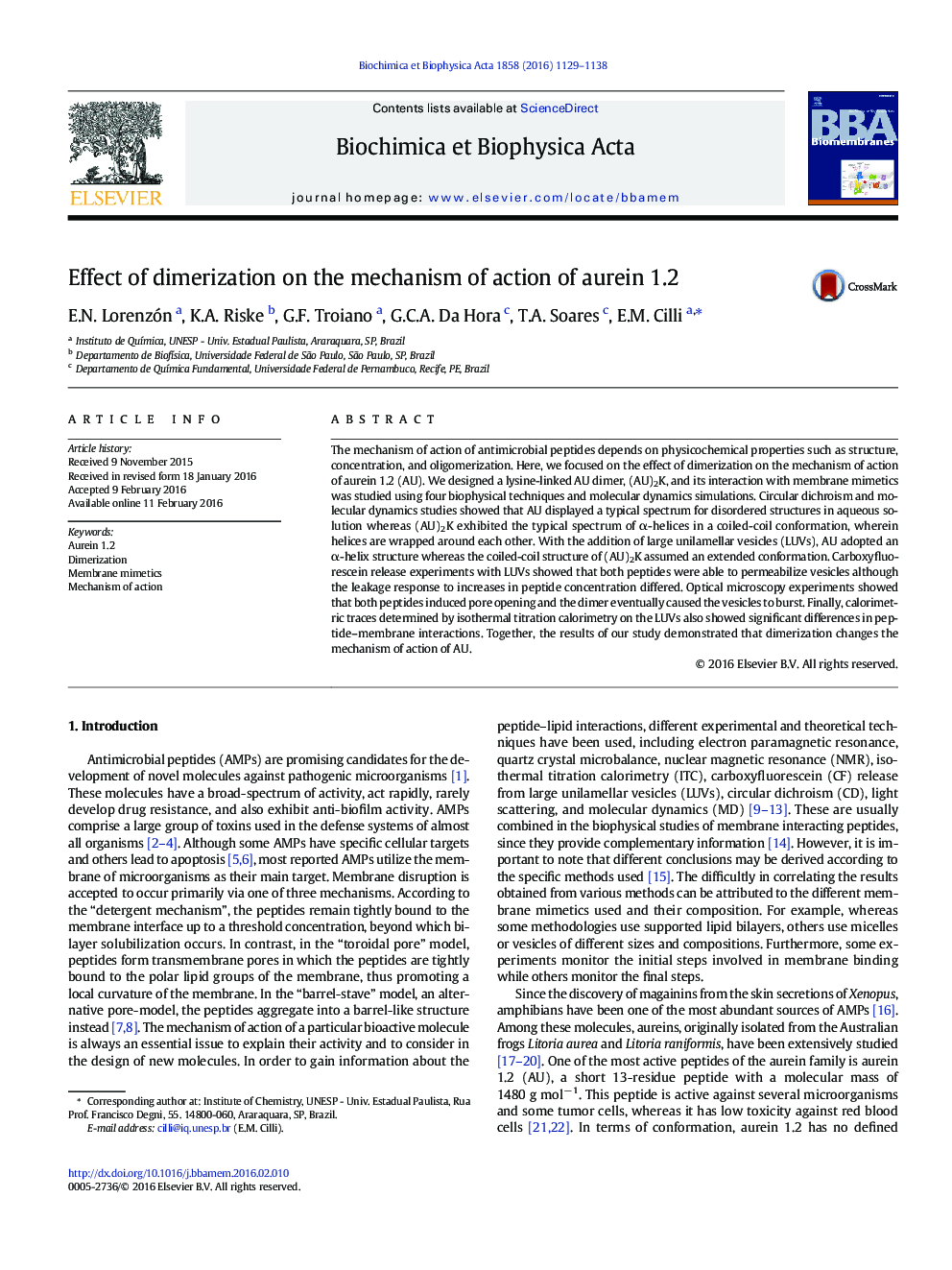| Article ID | Journal | Published Year | Pages | File Type |
|---|---|---|---|---|
| 1943964 | Biochimica et Biophysica Acta (BBA) - Biomembranes | 2016 | 10 Pages |
•A conformational change was induced by dimerization of aurein 1.2.•The mechanism of action of aurein 1.2 changed with dimerization.•A model for the interaction of the monomer and dimer with membranes is proposed.
The mechanism of action of antimicrobial peptides depends on physicochemical properties such as structure, concentration, and oligomerization. Here, we focused on the effect of dimerization on the mechanism of action of aurein 1.2 (AU). We designed a lysine-linked AU dimer, (AU)2K, and its interaction with membrane mimetics was studied using four biophysical techniques and molecular dynamics simulations. Circular dichroism and molecular dynamics studies showed that AU displayed a typical spectrum for disordered structures in aqueous solution whereas (AU)2K exhibited the typical spectrum of α-helices in a coiled-coil conformation, wherein helices are wrapped around each other. With the addition of large unilamellar vesicles (LUVs), AU adopted an α-helix structure whereas the coiled-coil structure of (AU)2K assumed an extended conformation. Carboxyfluorescein release experiments with LUVs showed that both peptides were able to permeabilize vesicles although the leakage response to increases in peptide concentration differed. Optical microscopy experiments showed that both peptides induced pore opening and the dimer eventually caused the vesicles to burst. Finally, calorimetric traces determined by isothermal titration calorimetry on the LUVs also showed significant differences in peptide–membrane interactions. Together, the results of our study demonstrated that dimerization changes the mechanism of action of AU.
Graphical abstractFigure optionsDownload full-size imageDownload high-quality image (219 K)Download as PowerPoint slide
